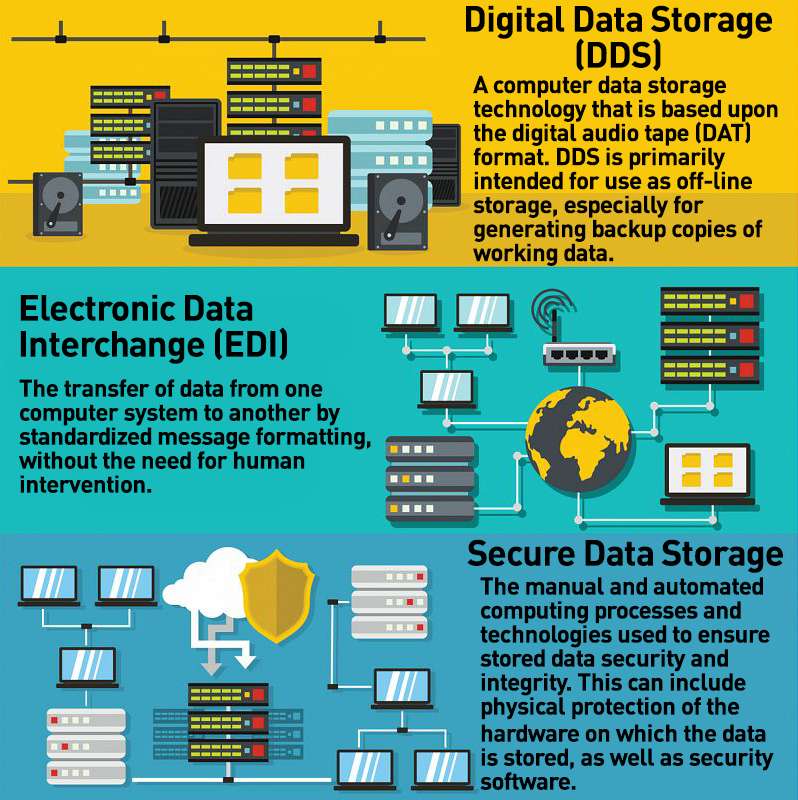Essential Cyber Security Practices for Effective Data Destruction Approaches
Wiki Article
The Value of Effective Information Damage Practices in Shielding Sensitive Details and Ensuring Computer System Safety And Security
In a period where data breaches are increasingly typical, the relevance of efficient data damage methods can not be overemphasized. Implementing durable information devastation methods not only minimizes these dangers but also straightens with legal compliance requirements, making certain that companies support their credibility and foster client trust.Recognizing Information Devastation
Comprehending information devastation is crucial in today's digital landscape, where delicate info can easily be jeopardized. Reliable information devastation involves not merely guaranteeing yet erasing data that data is irretrievable via detailed techniques. This procedure is vital for companies that deal with private customer details, copyright, or inner documents, as any type of breach can cause extreme economic and reputational repercussions.
Information damage includes different strategies, including shredding physical media, degaussing magnetic storage space tools, and utilizing software-based options that overwrite information several times. Each method serves a particular objective and should align with the sensitivity of the info being taken care of. As an example, physical damage is usually chosen for hard disks containing extremely confidential information, while software methods may be enough for much less delicate information.
Moreover, adhering to industry standards and guidelines, such as the General Information Protection Guideline (GDPR) or the Health And Wellness Insurance Mobility and Liability Act (HIPAA), is necessary for compliance and to minimize legal threats. Organizations has to establish a durable information devastation plan, train employees on best techniques, and routinely investigate their procedures to make sure that all delicate details is disposed of securely and efficiently.
Risks of Inadequate Practices
Inadequate data devastation methods reveal organizations to considerable risks that can have far-ranging repercussions. When sensitive info is not correctly dealt with, it continues to be prone to unauthorized gain access to, which can cause data violations and identification theft. Such events not just compromise the protection of individuals yet likewise taint the company's track record, resulting in a loss of customer count on and possible financial consequences.In addition, regulative compliance is progressively strict in several markets. Failing to comply with data damage guidelines can cause substantial penalties and legal activities against organizations. These fines can draw away and stress financial resources focus from core company procedures.
Additionally, the misuse of residual information can bring about intellectual home theft or company reconnaissance, endangering competitive advantages (data destruction). The effect of poor data damage expands past instant monetary losses; it can additionally lead to lasting damage to brand honesty and market position

Organizations should acknowledge that information security is not only regarding preventing breaches; it likewise encompasses the liable monitoring of information throughout its lifecycle. Neglecting effective information damage procedures can have devastating effects, emphasizing the necessity for durable steps to alleviate these threats.
Ideal Practices for Data Damage
Executing efficient data devastation techniques is crucial for protecting sensitive info and maintaining conformity with governing standards. Organizations needs to take on a multi-faceted technique to guarantee that information is irretrievable, consequently protecting against unauthorized gain access to and prospective violations.First, information must be categorized based on level of sensitivity, allowing companies to use ideal devastation approaches tailored to the level of risk. For digital information, utilizing software-based data-wiping tools that adhere to sector standards can properly overwrite existing data. Physical damage techniques, such as shredding or degaussing, are vital for devices that store sensitive details, making sure complete obliteration.
Developing a clear data retention policy is crucial, detailing exactly how long learn the facts here now various sorts of info ought to be maintained before destruction. Normal audits of data storage systems are additionally necessary to determine unneeded or outdated data needing elimination.
In addition, training staff members on the value of data damage and the specific procedures to adhere to fosters a culture of safety and security within the organization. Keeping documentation of data damage refines provides accountability and sustains compliance with outside policies and internal plans. By sticking to these finest practices, organizations can substantially alleviate the dangers connected with information exposure.
Legal and Compliance Factors To Consider

Failing to abide by these regulations can lead to extreme penalties, consisting of substantial fines and reputational damage. Organizations must implement a robust information devastation policy that straightens with these legal frameworks and gives clear guidelines on the correct methods of information disposal, whether physical shredding or electronic cleaning.
Additionally, maintaining documentation of information devastation tasks is crucial for showing conformity throughout audits or evaluations. By focusing on lawful and compliance considerations, organizations can improve their data safety stance and foster trust fund with stakeholders and customers, ultimately adding to a much more safe and secure information management setting.
Benefits of Effective Information Devastation
Effective information devastation practices expand beyond simple compliance; they supply substantial advantages to companies that prioritize them. By making certain that delicate details is irretrievably damaged, companies minimize the threat of information breaches and the prospective economic repercussions related to them. This proactive approach not just safeguards versus unapproved accessibility however additionally enhances the total credibility of the organization in the eyes of customers and stakeholders.Carrying out durable data damage methods, such as physical destruction of storage space gadgets or sophisticated data cleaning strategies, contributes to the strengthening of an organization's cybersecurity position. data destruction. It decreases the probability of intellectual property theft and protects proprietary info, thereby preserving an one-upmanship out there
/prod01/channel_3/media/tcd/itservices/images/Untitled-design-(26).png)
Final Thought
In verdict, efficient data devastation practices are important for safeguarding sensitive information and enhancing general computer system protection. Ultimately, a commitment to durable information devastation approaches fosters a culture of duty, consequently enhancing an organization's cybersecurity stance and preserving client trust fund.
Report this wiki page